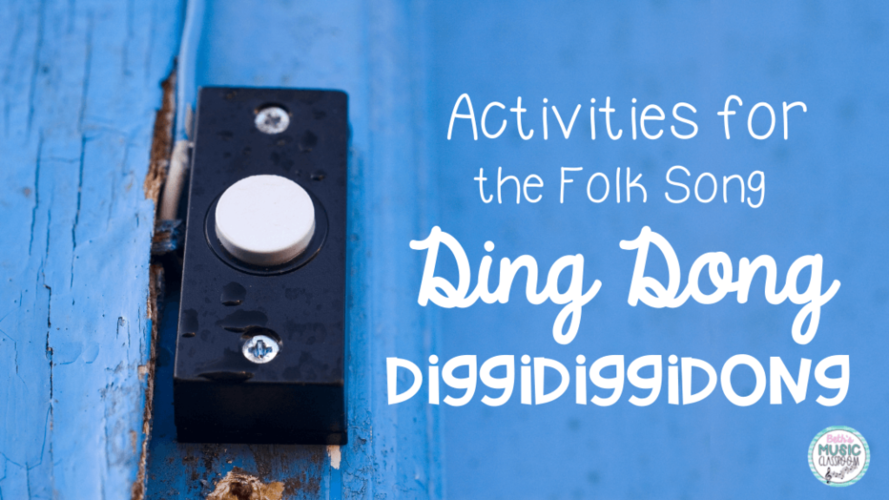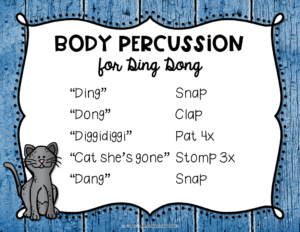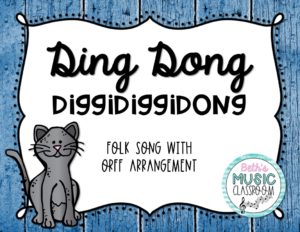4 Activities for “Ding Dong, Diggidiggidong”

Ding Dong Diggidiggidong
I’m sure you know the folk song, “Ding Dong, Diggidiggidong.” Or sometimes it’s called “diggy diggy dong” or “digga-digga.” Regardless of the exact title, it’s a fun song, for sure! I use this song so many different ways in my music room. I wanted to share a few with you.
Learning 16th Notes
This is a great song to use for preparing and presenting 16th notes. Other than 16th notes, the song only contains quarter and eighth notes and a quarter rest. As I teach the song, I use the body percussion (described below) to prepare them before actually learning the new rhythm. We discuss how many times they had to pat – 4. It matches the words “dig-ga-dig-ga” or “dig-gy-dig-gy.”
After teaching students what we call those 4 notes on one beat, we practice reading the rhythm of the whole song. I also love using rhythm play along videos for students to practice reading a new note.
Instrumental Arrangement
I love using classroom rhythmic instruments, xylophones, and glockenspiels with Ding Dong Diggidiggidong. After presenting sixteenth notes, students enjoy performing it by accompanying the song. Students take turns being either the choir or the band. Even with the younger grades who have not learned sixteenth notes yet, they can enjoy the song and playing simplified instrumental parts.
Dance and Movement
Next, adding some dance movements or body percussion workd well with “Ding Dong Diggidiggidong.” With my upper elementary students, I broke the class up into groups of 4 or 5 students. I let them decide on what folk dance movements they should use – circle, promenade, do-si-do. Each group performed their dance and then taught it to their classmates.
Body percussion is another option, as I mentioned in the first section as a way to prepare for sixteenth notes. I show my students the following key, matching a certain action with each word. It is tricky at first for them, but with practice, they can speed it up and feel more comfortable.
Each word could be a different motion or body percussion. I use clap, snap, pat, and stomp, however, you could really change it to anything. Here’s what I do:

Body Percussion for Ding Dong
Part Work
Finally, I pull this song back out during our harmony unit. I use it to help students understand what a round and melodic ostinatos are. I break up the class into smaller groups and assign each a specific part to perform. It’s a lot of fun, and with some practice, the song and instrumental parts could even be used for a concert performance.
I hope these activities for the folk song “Ding Dong, Diggidiggidong” are useful and that your students enjoy them! Message me if you have the opportunity to use them in your music classroom. You can find me on Instagram @bethsmusicclassroom or email me at beth@bethsmusicclassroom.com.
If you’re looking for more tips on teaching music, check out this post on how to make classical music exciting!

Ding Dong Diggidiggidong


